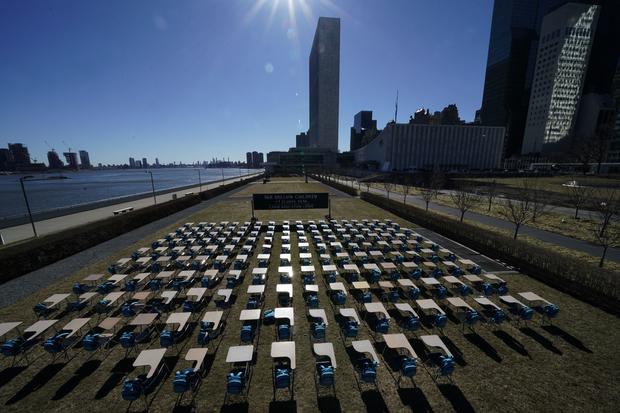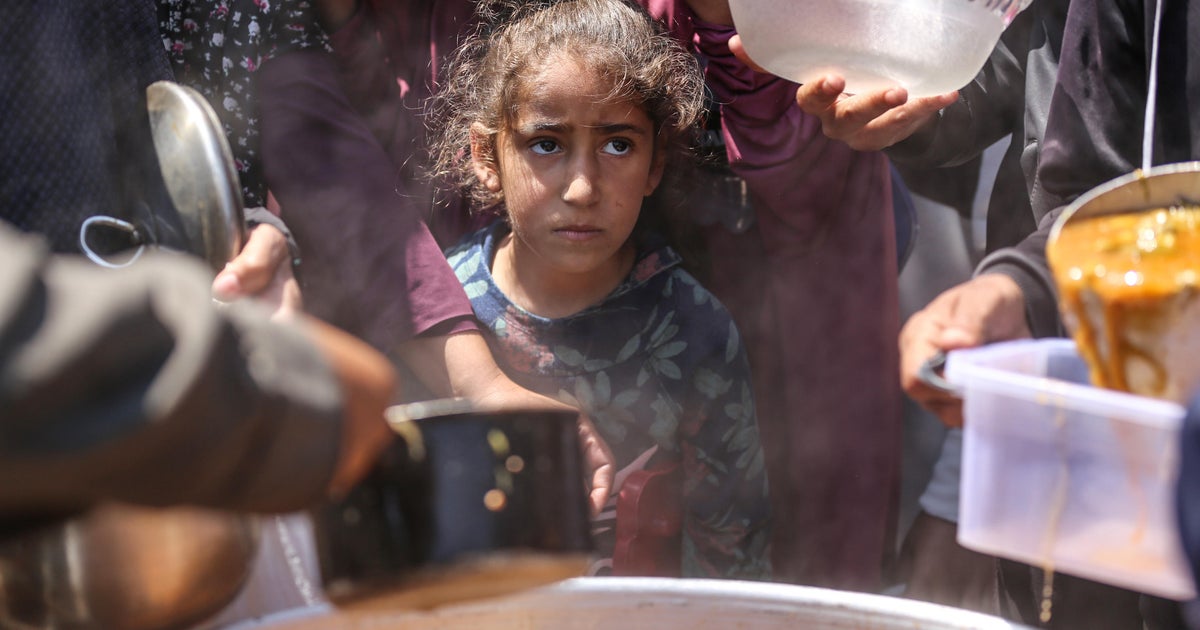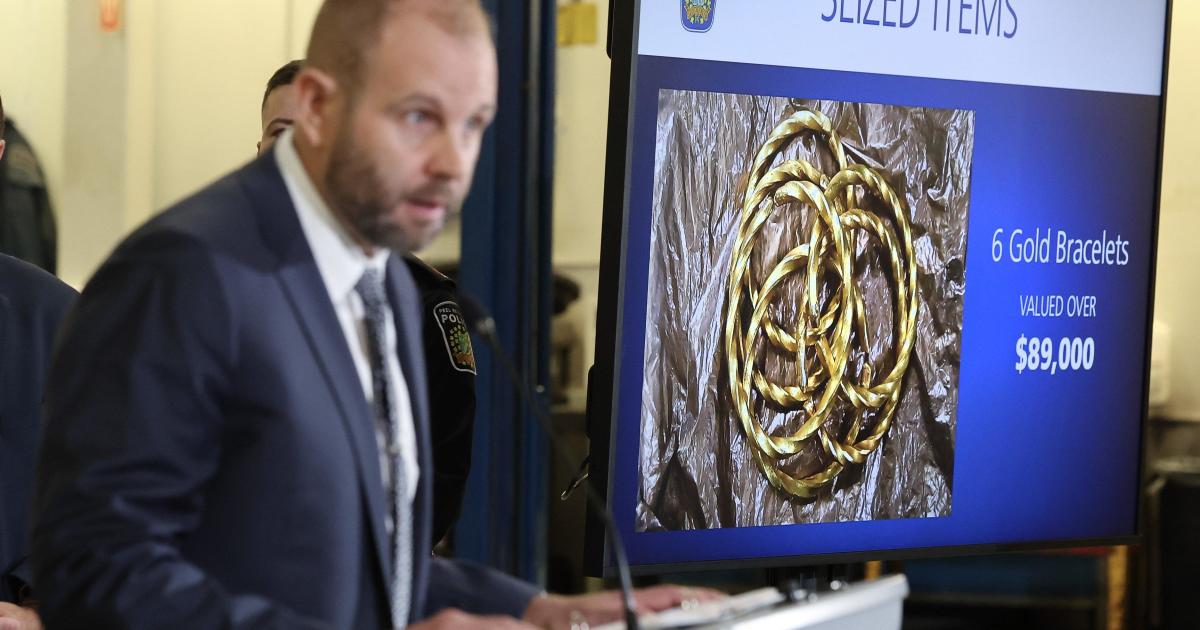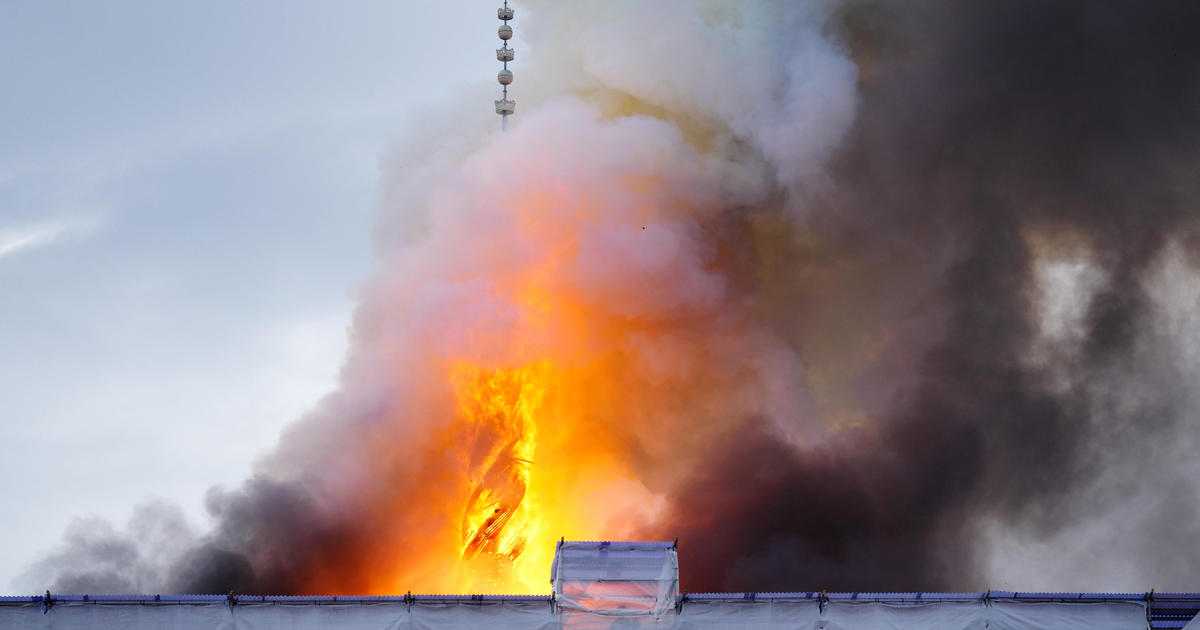U.N. uses empty desks of "Pandemic Classroom" in call on nations to end "very worrying" COVID school closures
United Nations — The coronavirus has claimed more than 2.5 million lives and infected almost 115 million people globally, but it's having a far wider impact on almost all of the world's children. The United Nations is trying to highlight the damage done by widespread school closures by giving it visual representation on the grounds of U.N. headquarters in New York, and urging countries to reopen classrooms.
In the Rose Garden of the U.N. campus in Manhattan, the "Pandemic Classroom" exhibit was unveiled on Tuesday evening to highlight what U.N. children's education agency UNICEF calls the "COVID-19 education crisis."
The installation features 168 empty desks, "each seat representing one million children living in countries where schools have been almost entirely closed since the onset of lockdowns," according to a new UNICEF report on the pandemic's impact on education. "With every day that goes by, these children will fall further behind and the most vulnerable will pay the heaviest price."
Robert Jenkins, UNICEF's Global Chief of Education, told CBS News that U.N. agencies including UNICEF, the World Bank, the World Food Program and the refugee agency are asking countries to open schools as soon as safely possible. The agencies worked together to create a framework, published last June, on how that can be done.
Since then, Jenkins said the agencies have "learned a lot about how to open schools safely and effectively," and he said it was more crucial than ever to get children back into learning environments.
"This is an education emergency," U.S. Ambassador to the U.N. Linda Thomas Greenfield said in a tweet, urging all countries to "prioritize reopening schools."
The shift to remote learning has shone a bright light what Jenkins calls the "digital divide," underscoring the fact that two thirds of the world's school-age children — or 1.3 billion kids between the ages of 3 and 17 — have no internet access at home, according to a joint report published in December by UNICEF and the International Telecommunication Union (ITU).
UNICEF runs many educational programs around the world, which have worked for decades to bring learning kits into remote places and to children uprooted from their homes by persecution or conflict. He said he's personally seen glee on children's faces in refugee camps when he brings in a box of writing materials and books.
A loss of "overall well-being"
But the coronavirus pandemic has caused disruption to schooling on a scale not seen in living memory, and kids are losing a lot more than just education. Jenkins said there has also been a worrying loss to "the overall well-being of children."
It's about "key issues of mental health, psychosocial interaction, the importance of interacting with their peers, and the sense of safety and protection that schools offer," Jenkins said. "We are increasingly seeing some very worrying evidence of the implication of protection-related concerns of schools being closed. Say, for example, increased rates of sexual violence and teenage pregnancies among adolescent girls."
He said the trends were "very, very worrying," and added that research by the U.N. agencies suggests as many as 24 million more children could drop out of schooling completely "as a result of the disruption caused by COVID-19."
The U.N.'s education and cultural agency, UNESCO, which contributed to the UNICEF report, says 888 million children worldwide continue to face disruptions to their education because of full and partial school closures.
The pop-up art installation at the U.N. is aimed at giving people "a sense of how many children we are talking about, how widespread is the magnitude of the challenge," Jenkins said, noting that about 1.6 billion kids worldwide are believed to have been out of school at some point due to the pandemic.
"When you're sitting in one of the desks with a backpack behind you in the chair, you realize that when these schools reopen, we again can get back on to pathways of hope and ambition and enable children to realize their potential," he said.
The U.N. agencies stressed that they don't want to see schools reopened without the appropriate safety measures in place, but they do want governments to prioritize getting those measures in place.
"We cannot afford to move into year-two of limited or even no in-school learning for these children," UNICEF Executive Director Henrietta Fore said, adding: "No effort should be spared to keep schools open, or prioritize them in reopening plans."





